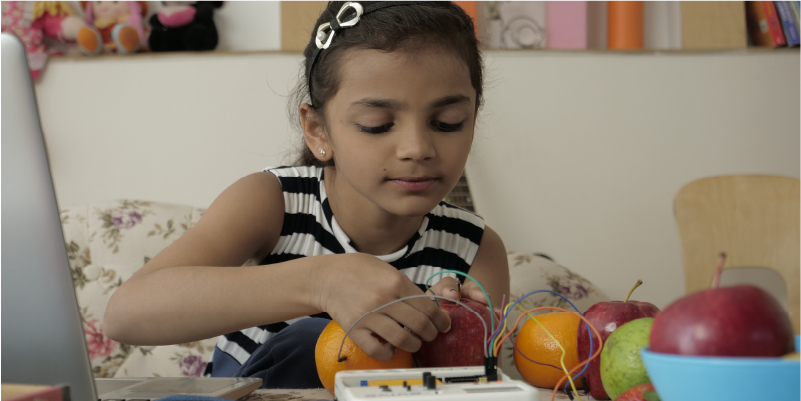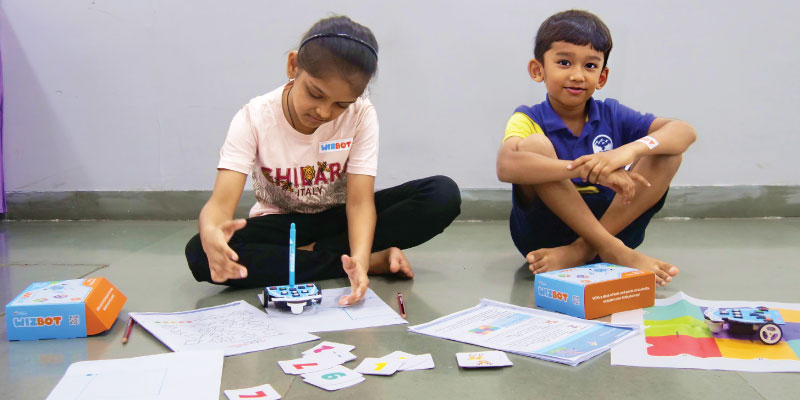As we continue to stay at home in an attempt to keep our families safe and to fight the pandemic at large, we must make sure that these essential days of growth for the kids don’t go unused. What needs to slow down right now is the spread of the virus and not your kids’ learning.; definitely not when you can easily teach STEM at home and bring the best of basic science and math to your kid’s study-table in the most interesting way.
Teach STEM at Home to Gear Your Kids for Tomorrow
The quarantine is indeed a great opportunity to introduce your kids to STEM and make the most of at-home learning. And if they are already familiar with it, let them explore the world of STEM as much as they can. Involvement in STEM education at home in their initial years will create a fertile base for future learning and also make them take smarter steps towards their career. Are you wondering how? Disciplines that make STEM – Science, technology, engineering, and math – are the roots of the advancement that the world has been witnessing. Today, there is barely anything that has not been made more efficient by the stroke of STEM.
The components of STEM will continue to upgrade human lives and be at the center of development. Consequently, jobs and start-ups will revolve around them. According to the Australian Department of Education, with advances in technology, around 65 percent of children starting primary school is likely to work in jobs that don’t yet exist. Thus, acquiring STEM skills will not only enhance learning by encouraging experimentation, problem-solving, and the use of technology but will also help your kids bag the best jobs available.
Now, if you’re ready to commence the STEM journey with your kids but not quite sure how to teach STEM at home, we have a bundle of tips and tricks to help you get it right. Read on to find out!
Also read: 10 Easy Science Experiments to Do at Home for Kids
-
Teach with Toys

Image: rawpixel.com One of the best ways to teach STEM at home is to do it with toys. Your kid’s toy basket holds a lot of potential to acquaint them with the basics of science and math. You can ask them to sort objects according to their colour, shape, size, weight, texture, etc. so that they develop a sense of these objects, and then make them do simple experiments with them like weighing of two toys and finding out which is heavier, rolling down marbles and balls on different kinds of surfaces, or learning about movements of a bouncing ball, a punching doll, Beyblades, etc. Such activities can help even 2-3-year-olds learn STEM at home.
-
Kitchen is the New Classroom

Image: rawpixel.com Your kitchen is fairly filled with stuff to facilitate STEM education at home. Bring your tiny tots to the kitchen and describe to them what you are doing when cooking. Use words such as more, less, lighter, heavier, melt, boil, cool, hot, cold, dissolve, and set. Tell them about different ingredients, where do they come from, and about how the ingredients change when you cook them. To further better their STEM fluency, show them how measurements work and talk about the usage of units of measurements. Moreover, to enhance at-home learning, bring in kitchen appliances like the stove, blender, oven, can opener, ice-cream scoop, etc. into the picture and explain the older kids the technology and engineering behind them.
-
Shadow Play
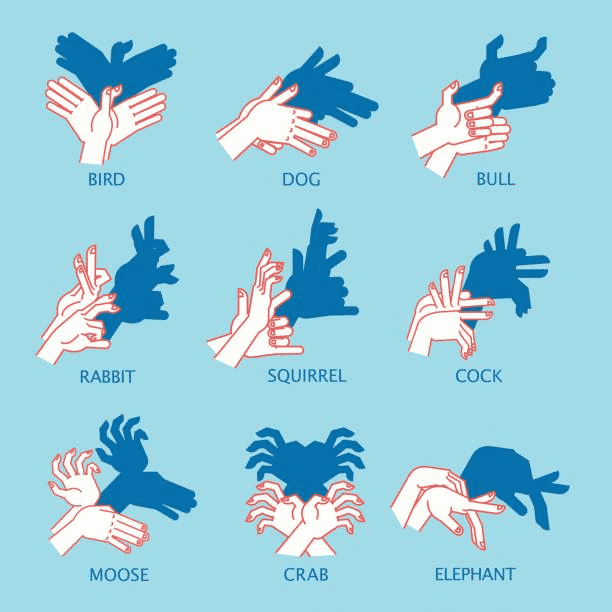
Image: istockphotos.com Make home learning a part of your bedtime schedule too! Make shadows on the wall with the help of a torch or other dim lights and talk about how these shadows change when the source of light or objects are moved closer to or further away from the wall. Try making shadows with objects of various shapes to help them better understand how it works. This can turn out to be a rather fun way to learn STEM at home.
-
Best Out of Waste
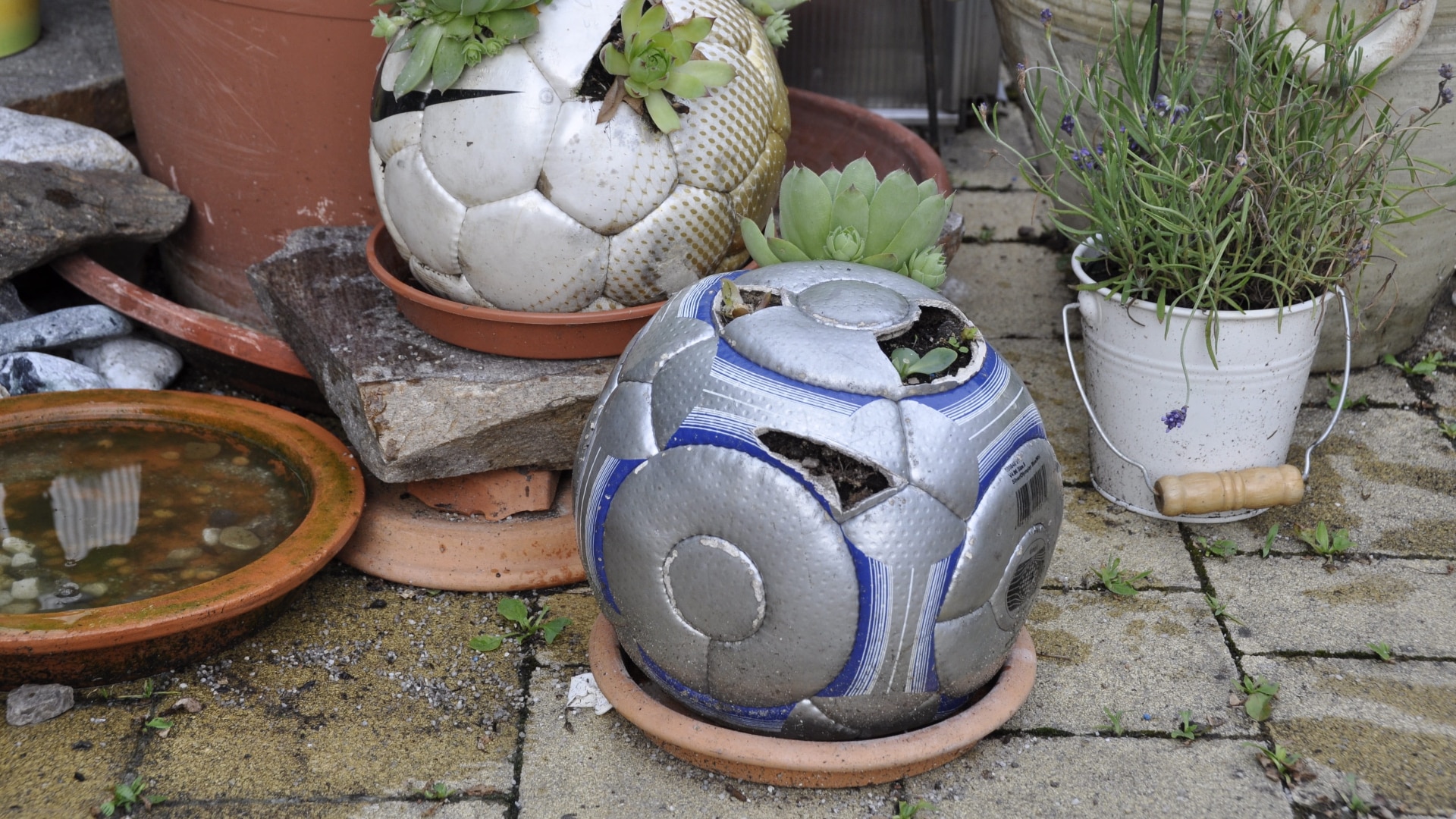 Yes, even your house waste can assist you while you teach STEM at home. Arrange for DIY STEM projects by just handing over to your kids, a few items lying around the house unused, and asking them to create something new out of these. This upcycling task can ignite interest in engineering and making things by hand. It will also add more meaning to their at-home learning experience by allowing them to realize multiple uses of an object and in turn, making them more resourceful. Another way in which you can enable STEM education at home with the help of waste is by imparting guidance on how to classify biodegradable and nonbiodegradable waste. You can also make them aware of the importance of reusing and recycling waste.
Yes, even your house waste can assist you while you teach STEM at home. Arrange for DIY STEM projects by just handing over to your kids, a few items lying around the house unused, and asking them to create something new out of these. This upcycling task can ignite interest in engineering and making things by hand. It will also add more meaning to their at-home learning experience by allowing them to realize multiple uses of an object and in turn, making them more resourceful. Another way in which you can enable STEM education at home with the help of waste is by imparting guidance on how to classify biodegradable and nonbiodegradable waste. You can also make them aware of the importance of reusing and recycling waste. -
Basic Engineering with DIY Projects
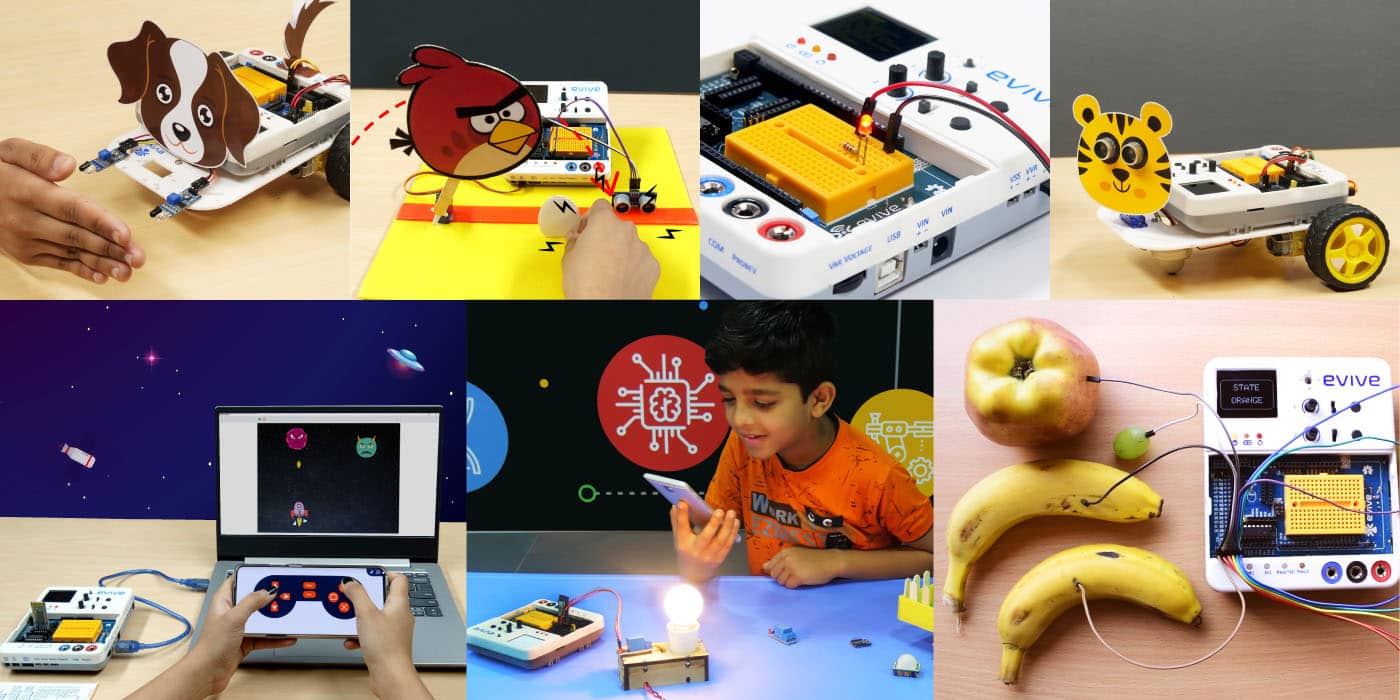 Let the budding engineers get their hands on cool DIY projects to explore the use of science and math concepts while building simple machines. There are countless projects that they’ll be able to do with basic household material and stationery. A great way to learn STEM at home, these basic engineering projects will act as a door opener for the realm of science and technology for them. It will also strengthen their grip over various concepts of physics, chemistry, and math adding to their academic performance. To effectively carry out these engineering projects at home in a well-guided way, you can check out STEMpedia’s evive Starter Kit, a comprehensive kit for kids and beginners of all ages to explore and learn practically the fundamentals of engineering. Here you can find numerous fun projects to make with the Starter Kit that your kids can undertake and keep up with home learning during the quarantine.
Let the budding engineers get their hands on cool DIY projects to explore the use of science and math concepts while building simple machines. There are countless projects that they’ll be able to do with basic household material and stationery. A great way to learn STEM at home, these basic engineering projects will act as a door opener for the realm of science and technology for them. It will also strengthen their grip over various concepts of physics, chemistry, and math adding to their academic performance. To effectively carry out these engineering projects at home in a well-guided way, you can check out STEMpedia’s evive Starter Kit, a comprehensive kit for kids and beginners of all ages to explore and learn practically the fundamentals of engineering. Here you can find numerous fun projects to make with the Starter Kit that your kids can undertake and keep up with home learning during the quarantine. -
Coding Is the Key
 The key to enhanced brain functions, increased competence, job security, and lots of fun. Learning the basics of programming has, more or less, become essential for all. But it holds special importance for the younger ones who will aim to achieve their goals in a world crawled over by the products of coding. So, as a part of STEM education at home, expose your kids to the world of coding which is rife with opportunities for them. And to do so, you can check out the various resources online and coding courses with plenty of options for you to choose from. One of the most ideal of these options is STEMpedia’s well-trusted Introduction to Programming course which brings to you the ultimate fun-learning experience with interactive teaching and helpful content.
The key to enhanced brain functions, increased competence, job security, and lots of fun. Learning the basics of programming has, more or less, become essential for all. But it holds special importance for the younger ones who will aim to achieve their goals in a world crawled over by the products of coding. So, as a part of STEM education at home, expose your kids to the world of coding which is rife with opportunities for them. And to do so, you can check out the various resources online and coding courses with plenty of options for you to choose from. One of the most ideal of these options is STEMpedia’s well-trusted Introduction to Programming course which brings to you the ultimate fun-learning experience with interactive teaching and helpful content.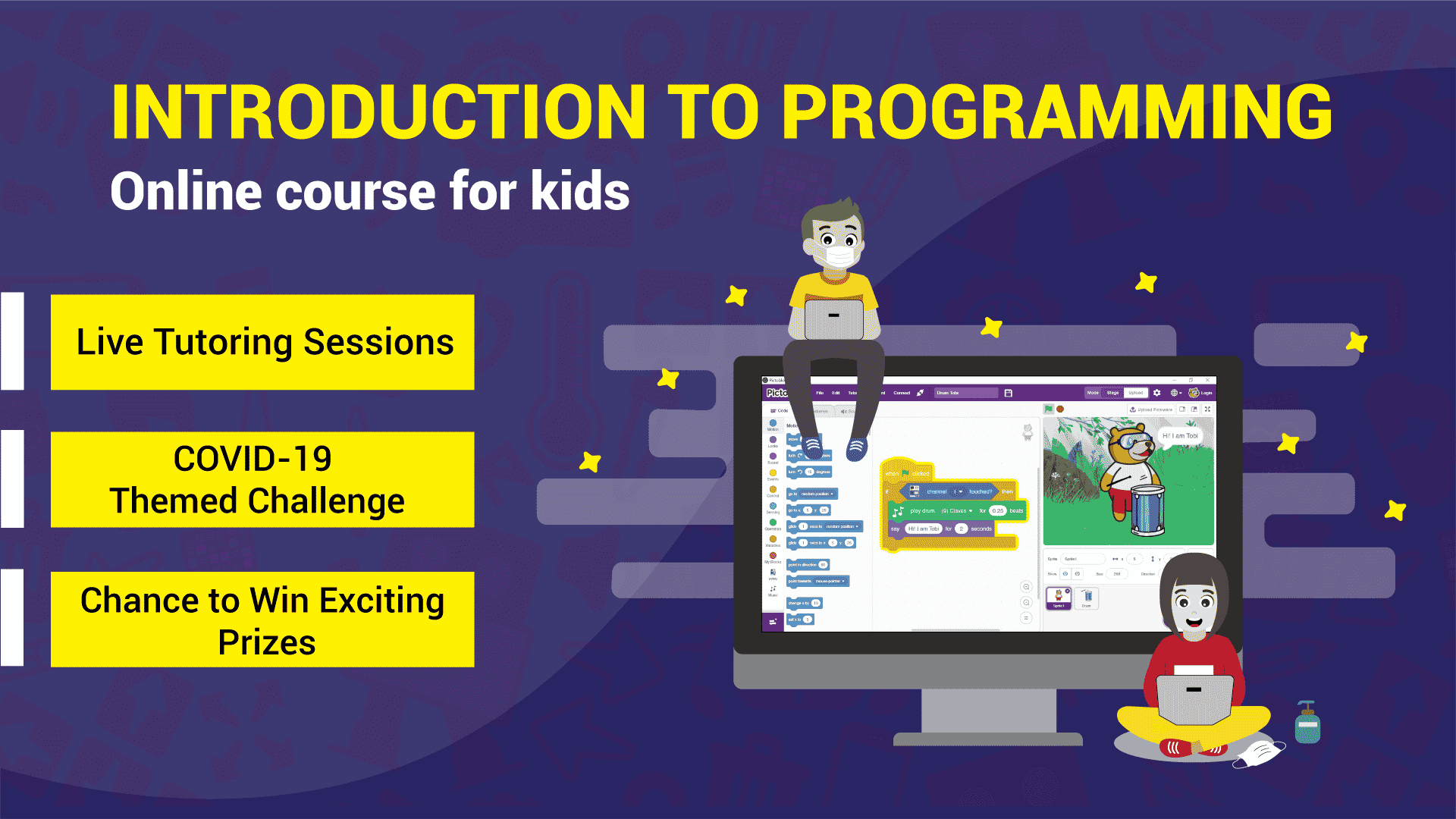
Enroll today for a FREE live demo session
Also read: Best Ways to Learn Programming for Children at Home -
Don’t Just Talk, Converse
For your kids to make maximum educational gains out of the at-home learning process, let them participate in it to the fullest. While you do the above-mentioned activities with them, keep asking them questions and allow them to answer these questions at their own pace. Let them engage their mind and body in the most pragmatic way possible so that they don’t just watch or listen but experience the lessons and be well-aware of its applications. To learn STEM at home, in an enjoyable yet informative manner, kids must try out things hands-on and put all their senses to use; as said by Benjamin Franklin, “Tell me and I forget, teach me and I may remember, involve me and I learn.”
Also read: Quarantine Parents Guide: Activities for Kids at Home to Fight Boredom
In a Nutshell
The STEM approach is all about learning by doing and doesn’t necessarily need a classroom. One can easily learn STEM at home with everyday things and settings as we saw in the tips mentioned above. Give these fun-filled activities a try and your kids will want to continue their STEM education at home post quarantine also.
Feature image taken from aviano.af.ml




